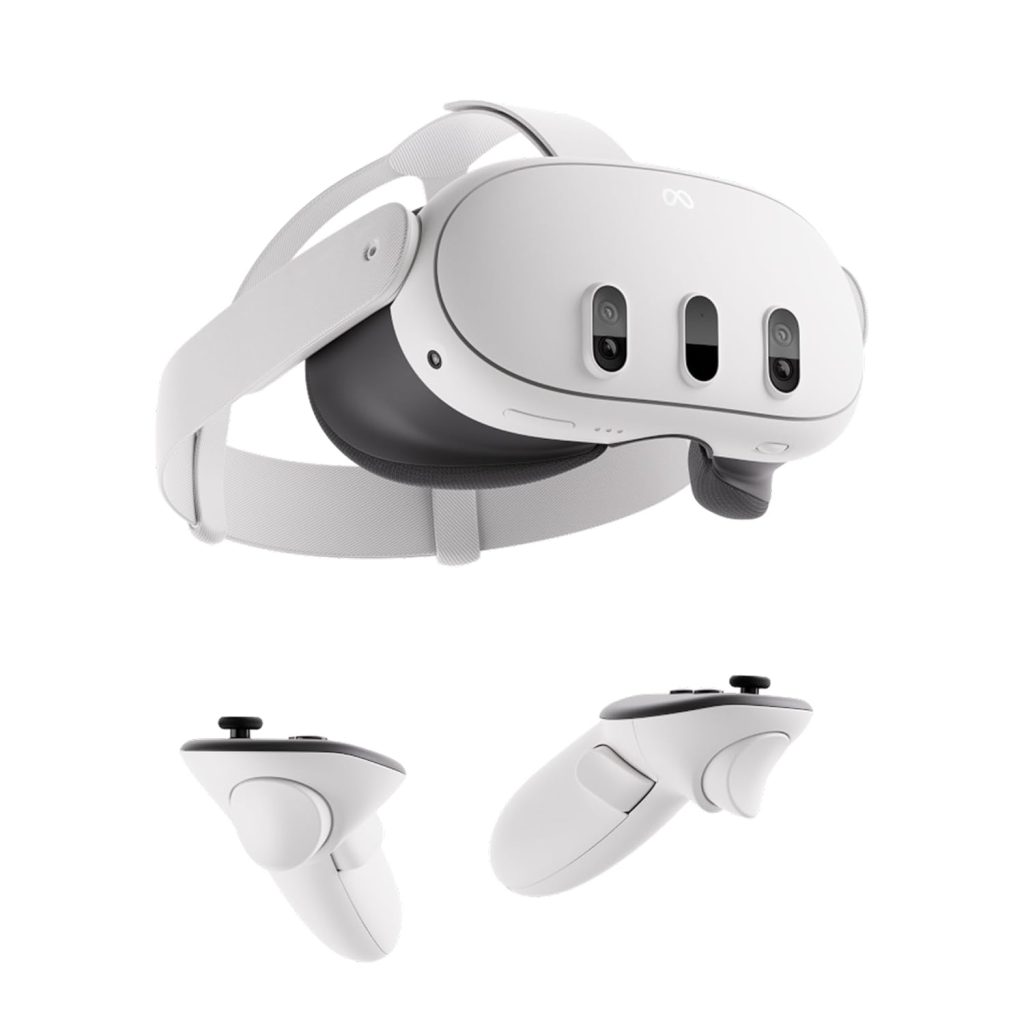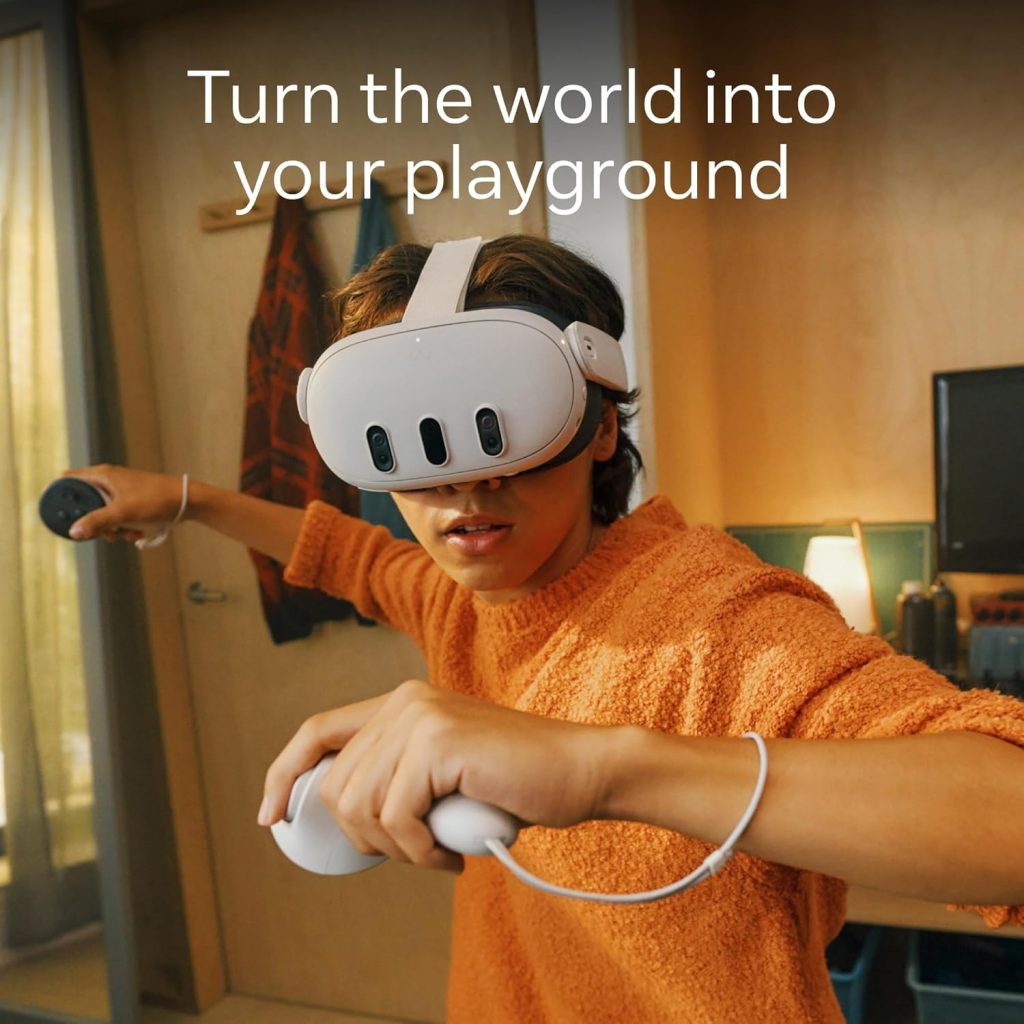Virtual reality has come a long way from clunky headsets and pixelated graphics. With each new generation, the gap between our physical and digital worlds grows narrower. Meta, a company deeply invested in building immersive experiences, continues to shape that narrative with its latest flagship headset: the Meta Quest 3. Launched as the successor to the Quest 2, this device signals a major leap forward in both form and functionality, offering users a glimpse into what mixed reality can truly become.

A Redesigned Form Factor for Everyday Comfort
Meta Quest 3 features a dramatically redesigned body that is 40% slimmer than its predecessor. The sleeker silhouette allows for more comfortable wear over extended periods, addressing the bulkiness that users previously tolerated for the sake of immersion. With a more balanced weight distribution and enhanced facial interface materials, the headset feels less like a piece of tech and more like a natural extension of your own movements.
Meta also refined the head strap with improved adjustability, making it easier to dial in the perfect fit. Whether users are seated, standing, or moving around a room-scale experience, the Quest 3 holds firm without sacrificing comfort.
Stunning Optics and Mixed Reality Capabilities
The most revolutionary upgrade in the Quest 3 lies in its optics. The device features pancake lenses that significantly improve clarity and reduce weight. Users now enjoy an optical sweet spot that is wider, sharper, and more forgiving—an important improvement for gamers, creators, and casual users alike.
The introduction of full-color passthrough transforms the Quest 3 into a true mixed reality device. Unlike the grayscale passthrough seen in Quest 2, the new camera array delivers vivid, full-color views of your physical environment. This enhancement unlocks layered experiences where digital elements seamlessly merge into your real-world setting. From interactive gaming to virtual workspaces and spatial video playback, the Quest 3’s depth sensor and upgraded spatial awareness make it possible to blur the boundaries between realities.
A Performance Powerhouse
Under the hood, Meta Quest 3 is powered by the Snapdragon XR2 Gen 2 chip—a performance leap that delivers twice the graphical processing power compared to Quest 2. This chip enables dynamic lighting, smoother frame rates, and faster load times across VR and MR applications.
Complementing this chipset is 8GB of RAM and storage options starting at 128GB, with a 512GB variant for power users. Whether you’re navigating elaborate virtual worlds or running enterprise applications, performance remains consistent and snappy.
Game developers have responded to this leap in performance with richer content optimized for Quest 3. Titles now feature denser textures, real-time physics, and more responsive interactions, pulling players deeper into immersive environments.
Sound Designed for Immersion
Meta didn’t overlook audio in its pursuit of realism. The Quest 3 is equipped with integrated spatial audio drivers that deliver increased bass response and a wider sound field. Whether the roar of a dragon, the echo of a distant corridor, or the subtleties of environmental ambience, the headset’s acoustic profile is tuned to match the visual fidelity.
Mic enhancements also improve voice clarity, enabling richer communication during multiplayer sessions, work meetings, or virtual hangouts.
For users who prefer external audio gear, the 3.5mm jack remains available. Bluetooth support also allows pairing with wireless headphones, providing flexible choices for audio immersion.
Controllers That Understand You
The Meta Quest 3 ships with redesigned Touch Plus controllers that feature improved ergonomics and better battery life. They now feel more natural in hand with reduced weight and refined tracking. Thanks to TruTouch haptics, users receive tactile feedback that simulates the sensation of textures, impacts, and environmental cues within the virtual world.
Perhaps the most exciting advancement is hand tracking 2.0, which allows users to ditch the controllers entirely for select experiences. This update dramatically improves gesture recognition, turning your bare hands into interactive tools that respond to pinch, swipe, and wave motions.
Whether you’re drawing in 3D, manipulating virtual objects, or playing controller-free games, the Quest 3 puts more control in your hands—literally.
Tailored for Work, Play, and Creativity
While gaming remains a central focus, Meta Quest 3 isn’t just for entertainment. It’s also a productivity and creative powerhouse. Applications like virtual desktops, immersive whiteboards, and collaborative meeting platforms take full advantage of the device’s spatial mapping and mixed reality capabilities.

Artists, designers, and creators will appreciate apps that enable sculpting, painting, and modeling in fully immersive environments. Educational experiences, from science simulations to language learning, feel more engaging and impactful when they’re wrapped in immersive media.
Quest 3 also supports cross-app multitasking, allowing users to jump between productivity tools and entertainment apps seamlessly—perfect for modern workflows that demand flexibility.
Battery and Charging
Battery life averages around two to three hours depending on usage intensity. While this doesn’t break new ground, the device supports fast charging via USB-C and includes power management tools that intelligently conserve energy when idle.
Optional accessories like the Meta Elite Strap with battery provide extended use for marathon VR sessions. Combined with Meta’s portable charging solutions, users can tailor their experience to their specific needs.
Pricing and Availability
Meta Quest 3 positions itself as an accessible premium option within the VR ecosystem. With a starting price that undercuts traditional high-end tethered systems, Meta offers users high performance without the need for external sensors or a powerful PC.
This makes the Quest 3 ideal not just for seasoned VR users but also for newcomers looking to explore virtual and mixed reality with minimal setup. It works as a standalone device but supports PC VR via Air Link for more demanding experiences.
Final Impressions
Meta Quest 3 is not just an iteration—it’s an elevation. From sharper visuals and higher processing power to full-color passthrough and intuitive controls, this device pushes the boundaries of what a standalone headset can offer.
It’s a testament to Meta’s vision of spatial computing, blending work, play, and creativity into one cohesive ecosystem. For users across disciplines—gamers, developers, artists, educators—the Quest 3 stands as one of the most compelling platforms to explore the next frontier of human-computer interaction.



